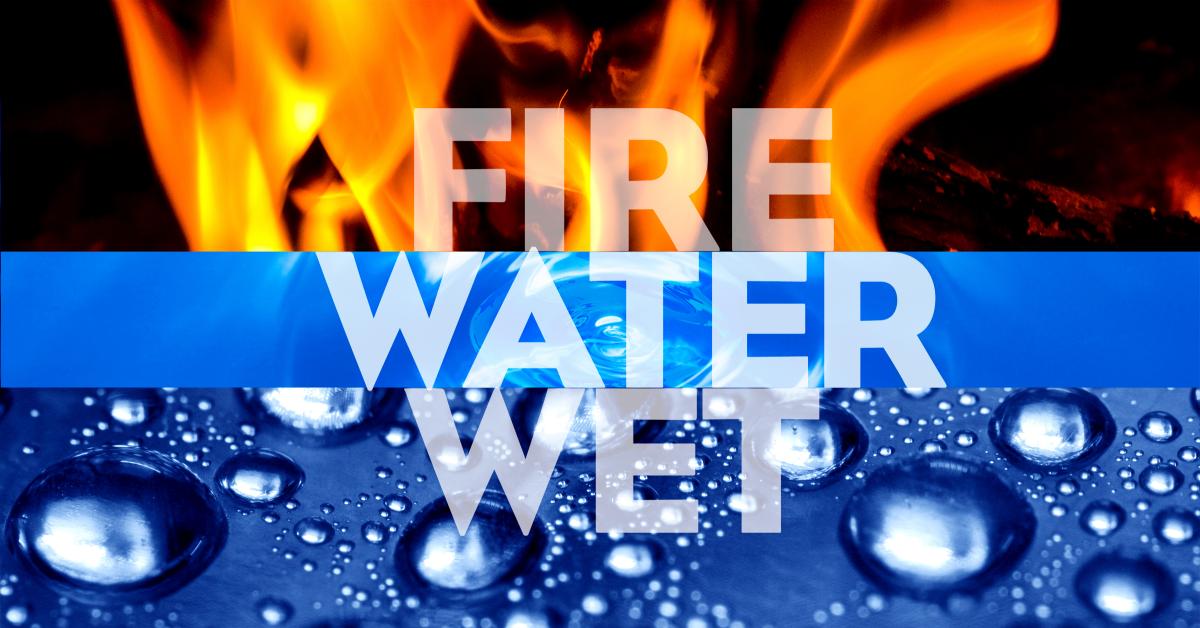TROY, Mich. — Seeking new ways to bolster revenue, fabricare professionals are entering the textile restoration market in droves.
In doing so, they work with homeowners and insurance companies to clean and restore household soft goods such as clothing, window coverings, bedding and towels following a flood or fire.
The goal?
To restore items to pre-incident condition at a fraction of the cost of replacement, and to do it in the most efficient, productive and profitable way possible. That’s just good business. And thanks to recent advancements in chemicals and dryer programmability, more than 90 percent of contaminated textiles can be restored to pre-loss condition using water.
All durable goods, bedding, towels, typical wash-andwear items, as well as traditionally dry cleaned items, including wool suits, designer silk dresses and wedding gowns, can now be safely wet cleaned. The good news? Using water — not solvent — is not only less costly and more environmentally friendly, it’s also more productive and efficient.
Both are effective restoration methods, but at the end of the day, a textile restoration cleaner will generate more profit using wet cleaning over dry cleaning. Wet cleaning can boost production 50 percent over alternative solvent dry cleaning. Moreover, wet cleaning outperforms dry cleaning without the negative environmental impact.
The steps involved with dry cleaning, although effective, are more involved and take more time. In order to restore post-fire textiles using dry cleaning, textiles must be pre-treated overnight in an ozone chamber.
The ozone works to remove the odors — something dry cleaning alone can’t accomplish — but adds hours to the textile restoration process. The ozone step is a must for post-fire textiles, but not always a must for post flood textiles.
After treatment inside the ozone chamber, items are sorted and loaded into a drycleaning machine that uses solvent, not water, to clean. After another 60-75 minutes inside the drycleaning machine, the load is removed, finished and packaged.
Using a 60-pound capacity drycleaning machine, it takes 75 minutes to clean, finish and package 60 pounds of textiles. The total time to completion, including the ozone step, is anywhere from 8 to 12 hours.
When wet cleaning is used, there is no need to pre-treat with ozone because wet cleaning alone effectively removes the worst odors, including smoke.
Instead, textiles are sorted and loaded into a highly programmable wetcleaning machine, which is programmed to automatically combine the right water levels, water temperatures, rotation action, extract speed, number of baths and rinses, and cleaning chemicals. Once the load is complete, after 30-40 minutes, the textiles are loaded into a highly programmable dryer.
In the past, it was difficult to dry delicate items, such as silks, wools and linens, without damaging them. But, thanks to new dryer advancements, this isn’t the case anymore. New technology offers phased control over the drying process.
Each phase allows programmability of drum rotation speed, drum rotation interval, moisture level, timed reversing, input air temperature, drying temperature, heating temperature, drying time and time limit. In around 20 minutes, drying is complete and textiles are unloaded, finished and packaged.
Using a 60-pound capacity wetcleaning machine and a 60-pound capacity dryer, it takes just 75 minutes to process and finish 90 pounds of textiles.
Comparing the two methods side by side, even without the ozone step that’s often required when using dry cleaning, wetcleaning processes are 50 percent more productive than dry cleaning.
Now, let’s determine whether wet cleaning is an effective method for restoring heavily contaminated textiles.
Check back Thursday for the conclusion.
Have a question or comment? E-mail our editor Dave Davis at [email protected].
